- Home
- Troy Denning
Shadows of Reach: A Master Chief Story
Shadows of Reach: A Master Chief Story Read online
Thank you for downloading this Simon & Schuster ebook.
Get a FREE ebook when you join our mailing list. Plus, get updates on new releases, deals, recommended reads, and more from Simon & Schuster. Click below to sign up and see terms and conditions.
CLICK HERE TO SIGN UP
Already a subscriber? Provide your email again so we can register this ebook and send you more of what you like to read. You will continue to receive exclusive offers in your inbox.
For Elliot Courant
HISTORIAN’S NOTE
This story takes place in October 2559, a year after the events of Halo 5: Guardians, as the AI Cortana retreats into the Domain, then resurrects a host of Forerunner Guardians and uses them to impose martial law on interstellar civilizations across the Orion Arm of the Milky Way Galaxy.
CHAPTER ONE
0217 hours, October 7, 2559 (military calendar)
UNSC Owl Insertion Craft Special Delivery
Insertion Run, Continent Eposz, Planet Reach
The situation monitor on the forward bulkhead remained in blackout mode, waiting for the Owl’s hull temperature to drop far enough to deploy the nose cameras. It didn’t matter. John-117 had inserted onto dozens of glassed worlds during his thirty-four-year combat career, and he knew what to expect: a blanket of silver-limned clouds hanging over vast sweeps of heat-fused ground. Mats of lichen and algae starting to take hold in scattered pockets of dust and mud. Black-bottomed ponds licking at mirror-smooth shores, spider-veined river systems draining into half-empty seas… and not much else.
The Covenant was gone now, save for a few holdout factions still clinging to their hatred of humanity or a lost hope of transcendence. But during the war, the aliens had rained monsoons of hot plasma down on hundreds of worlds, burning soil and melting bedrock, boiling oceans and filling the air with superheated vapor. Any creature that had escaped instant incineration had suffocated on superheated smoke, or seared away its feet fleeing over molten ground, or emerged from hiding to eventually starve while wandering barren expanses of ash-impregnated lechatelierite.
Nothing survived a Covenant plasma bombardment. John knew that.
But this was Reach, the closest thing to a home he and his fellow Spartan-IIs could remember, and he wanted to see for himself how it was faring these days.
He needed to.
Operation: WOLFE was supposed to be a simple mission, just a two-kilometer descent into the ruins of CASTLE Base to recover the assets Dr. Catherine Halsey needed to save galactic civilization, again, from a rogue AI.
Cortana.
Two years ago, Cortana had been John’s AI, residing in his Mjolnir armor, connected to his mind through a port in the back of his skull. And she—
Damn. It was happening again.
John could hardly think of Cortana’s name without finding himself in a battle against his own thoughts, replaying the entire incident in his mind and wondering what he might have done differently. It wasn’t a bad neural lace or hypnotic suggestion or anything like that—he was just…
He checked his heads-up display for the GO TIME.
ETA twenty-seven minutes. Enough of a window to get himself sorted and focused. John had known before their last battle together that Cortana was descending into the final stages of “rampancy”—a sort of inevitable AI schizophrenia—as her mind literally outgrew its neural matrix after seven years of existence. But with the fate of humanity hanging in the balance, he had allowed Cortana to infiltrate the control systems of a primordial enemy vessel, sacrificing herself so he could destroy a devastating weapon threatening Earth. And it had worked.
Until Cortana returned from the dead.
Things had really gone off the rails then, and John had made some decisions he regretted. Worse, he had dragged the rest of Blue Team into the mess along with him, going AWOL to uncover the mystery of Cortana’s rebirth and rescue her… from what? Herself?
Transformed by residing for a year in an ancient quantum information repository known as the Domain, Cortana had returned more intellectually capable than ever, with a host of long-hidden, massive “Guardians” at her disposal. She had wasted no time issuing an ultimatum to every world in the Orion arm of the galaxy: accept her rule and live in peace, or defy her and suffer the brutal consequences.
John’s second-in-command, Fred-104, called it peace-through-menace, but that was an understatement. The Guardians were so powerful they could neutralize entire worlds and knock fleets out of orbit, killing thousands—or even hundreds of thousands—when huge vessels crashed down on the towns and cities below. And Cortana had also corrupted an army of human AIs into aligning with and spying for her. Now interstellar civilization was sinking into a nightmarish surveillance state, with the situation worsening each day.
And John could not help feeling responsible. Had he ordered Cortana to stand down when her deterioration began to accelerate, she would never have been drawn into the Domain… but he would never have destroyed that Forerunner weapon.…
It was all just going in circles.
There had been no good choices, in any event—John knew that. He had done the best he could under such terrible circumstances… right up until he disobeyed orders and went AWOL, and had to be doggedly hunted down by his superiors and fellow Spartans. Someday there was going to be a reckoning for that decision. Just not now.
Now he had a job to do.
John checked the ETA. Twenty-five minutes. Still plenty of time. But during the previous day’s pre-drop threat sweep, the Special Delivery’s mothership—an Eclipse-class prowler named Bucephalus—had picked up some surface chatter suggesting there was a low-intensity conflict under way in the Arany Basin. It hadn’t been much, just a few transmissions as one group of humans warned another about an enemy patrol, followed a few minutes later by a trio of heat flares that could have been anything from plasma strikes to missile detonations. There had probably been more to the battle, of course, but the Bucephalus’s instruments weren’t sensitive enough to pick up small- and medium-arms fire from orbit. Just the artillery.
John and the other Spartan-IIs had grown to maturity on Reach, so he’d always paid special attention to any mention of it in the intelligence reports routed past him over the years. He knew that not much had happened on the planet since the Covenant plasma bombardment. A handful of salvagers—both human and alien—had started to visit Reach after the glass cooled, and two years ago, a small colony of rehab pioneers had set up somewhere on the continent of Eposz.
The Arany Basin was located on Eposz, so it seemed likely that the conflict involved the rehab pioneers somehow. But even that was not a certainty. The intelligence reports had grown extremely rare after Cortana issued her ultimatum, and the few John had seen did not refer to Reach. The fight could be between anybody—two salvage companies, the rehab pioneers and a salvage company, different rehab factions, or a hundred other possibilities.
All John knew for sure was that the conflict location was good news, because Blue Team had no intention of entering the Arany Basin. Sure, he would have liked to check on the pioneers and see how they were doing. Reach was the only home he could remember, and he would have liked some reassurance that it was in good hands.
But that wasn’t the mission.
“Two minutes.”
John let his gaze drop to the woman who had spoken, a steady-eyed crew chief in the jump seat beneath the situation monitor. Dressed in the black insertion suit of a marine special operations flight crew, Stella Mukai had a round face, Newsakan features, and a warm, no-nonsense manner that seemed equal parts den mother and drill sergeant. On her sleeve, she wore the flat black rocker and triple che
vrons of a chief petty officer—a rank just two steps below John’s own rank of master chief petty officer.
The ETA in John’s heads-up display still read twenty-five minutes, so he asked, “Two minutes until what, Chief Mukai?”
Mukai pointed above her head, and John realized she had caught him staring at the blank situation monitor.
“Until the nose cameras deploy,” she said. “But you won’t see much at this time of night. With the cloud cover over Eposz, the surface glass is going to be about as reflective as a dust nebula.”
“What a shame,” Fred-104 said over his voicemitter. He was seated directly across the green-lit troop bay from John, secured in place by an oversize titanium-alloy crash harness designed especially for Spartans. “A state-of-the-art insertion craft like this, and nobody thinks to install an infrared enhancement package?”
Mukai’s brow shot up at the remark—every Owl had an infrared enhancement package—and she cast an admonishing glare in Fred’s direction. The Special Delivery was her baby, and nobody told a crew chief how to run her boat—not even a Spartan-II wearing four hundred kilos of GEN3 Mjolnir power armor.
Fred pretended not to notice Mukai’s reaction, tipping his helmet back so that the faceplate was angled up toward the monitor. It wasn’t a bad strategy, giving the crew chief a chance to cool off without backing down. Fred could be smart like that, patient but unyielding. It was one of the qualities that made him such an effective soldier—even if he still seemed a bit irritated by the UNSC’s response to some of Blue Team’s actions during the Cortana event.
Linda-058 sat next to Fred, her own faceplate directed slightly toward the deck. Her hands were resting on her thighs, palms up, and she seemed to be almost floating in her seat, her body upright and motionless as the Owl bounced and shuddered toward the surface of Reach. She was only about half present, John knew. Her attention was focused inward on a quiet mind, her external perceptions tickling over her like a moth’s feet. She liked to say that meditation was her best combat asset, the secret to making an impossible shot with the sky falling on top of her—or to lying motionless for days, waiting for the target to show itself. John didn’t know about that. He tended to fall asleep when he tried to still his thoughts, and he didn’t do motionless. But there was no arguing with the results. Linda was the best sniper in the United Nations Space Command.
The fourth member of Blue Team, Kelly-087, sat on John’s side of the troop bay, in the seat to his left. Her hands were grasping her shoulder restraints, and her dome-faced helmet was moving in time to the music he knew was blasting inside her headgear. Kelly had developed a sudden fondness for twentieth-century “rock” bands a year ago, after the Cortana event. John suspected the driving beats and rebellious lyrics were Kelly’s own version of meditation, a way to smother the extraneous thoughts and doubts that filled a soldier’s mind before an action began.
John’s stomach grew heavy as the Special Delivery decreased its angle of attack and began to decelerate. The nose cameras deployed and went active, and the situation monitor switched from blackout mode to a dark-as-night external view.
The ETA on John’s HUD dropped to twenty-three minutes. Mukai was still glaring at Fred, who was still pretending not to notice. Clearly he was in need of tactical support.
“Chief Mukai, it would be helpful to get a look at what’s happening down there,” John said. “I’d appreciate consideration of Spartan-104’s suggestion to use infrared enhancement.”
“That was a suggestion?” The crew chief continued to stare at Fred. “Funny. All I heard was a smartass lieutenant telling me how to run my bird.”
Fred finally dropped his gaze to Mukai. “Sorry, Chief. I’ll be clearer the next time I make such a request.”
Mukai nodded. “I’d appreciate that… sir.”
Special operations teams were tight-knit units where rank took a back seat to functionality and cohesion, so by acknowledging Fred’s commission, Mukai was tacitly accepting his truce offer. John felt proud of himself. If the Spartans ever ran out of enemies, maybe he could transfer to the Diplomatic Corps.
Negotiate peace treaties or something.
Mukai spoke into her headset, and the situation monitor blossomed with color. A blotchy blue field filled the screen, slowly drifting downward as the Special Delivery descended over the polar snowfields toward the green circle of Big Crater Bay. Ringing the southern edge of the bay was a wide indigo crescent where a mud beach separated the water from the endless orange sweep of the Eposz glasslands.
The glasslands still showed orange because lechatelierite cooled from the top down, its surface solidifying into a vitreous blanket that kept heat from radiating into the air. The ground beneath could stay molten for a year, and remain hot to the touch for a decade. And the beach existed because much of the liquid that had been vaporized during the Covenant’s plasma bombardment had not yet returned to the oceans. Most of the planet’s water continued to hang in the atmosphere in vast banks of fog and clouds, or to lie trapped on the glass in giant lakes and ash bogs.
A crimson dot flared into existence on the monitor, expanding rapidly against the indigo ring that surrounded Big Crater Bay. The hot spot was located on the northern boundary of the beach, about where the Babd Catha Ice Shelf had once ended. Reach still had plenty of geothermal activity, so the heat blossom could have been a geyser or volcano erupting just as the Special Delivery passed overhead.
Yeah, sure.
Kelly stopped rocking her helmet and turned her bulbous faceplate toward the monitor. “They are seeing this in the cockpit,” she said. “Right?”
Mukai craned her neck around to look up at the display.
“Count on it.” The dot swelled into a button-sized blur, then divided into five points and continued to expand. Mukai’s eyes widened, and she looked back to Kelly. “Trust me. They have buzzers.”
Rather than distract the pilots by asking for a report, John synced his HUD to the Special Delivery’s combat information system and saw the open-bottomed triangles of five airborne bandits. The configuration—a staggered polygon—had been favored by reconnaissance flights since the dawn of orbital combat. A MS31 designator code floated beneath each of the five symbols.
“They’re Seraphs,” John said. “All Morsam-pattern.”
“And that’s a good thing?” Fred asked.
One of the Covenant’s most durable space fighters, Seraphs could be found in the fleets of Covenant splinter groups ranging from Kig-Yar pirate bands to the Banished to the Servants of the Abiding Truth. They were a bit graceless and ungainly in atmospheric flight, but fast, energy-shielded, and heavily armed.
“Well,” Mukai said, “at least they’re not Phaetons.”
Fred looked toward her. “You’re a real ray of sunshine.”
Phaeton exoatmospheric fighters were Forerunner craft designed a thousand centuries before—and still technologically far beyond anything in the UNSC fleet. Produced from self-assembling blocks of smartmatter, they weren’t all that sturdy. But they were well-armed, with long-range mass cannons and self-guiding pulse missiles. They could even teleport short distances to evade enemy fire. But the most alarming thing? They were usually attached to one of Cortana’s Guardian Custodes. So, when Phaetons were in the area, fighting wasn’t an option. The only viable tactic was to retreat and hope for a safe escape.
The heat blossoms continued to expand on the situation monitor. The Spartans all hated this part of the mission—being helpless passengers at the mercy of someone else’s skill. But there was an art to flying Owls, and Major Van Houte was twice the pilot any of them were, with a long history of successful insertions under conditions far worse than these.
But there were still five Seraphs coming—and they were obviously aware of the Special Delivery’s presence.
“Relax, Spartans,” Mukai said. “Those Seraphs might know we’re here, but they don’t know where we are. There’s a difference.”
“Thanks,” Fred
said. “Now I feel better.”
“As cool as a comet,” Kelly added. “I can’t even remember the last time an insertion went off as planned.”
John could. It had been nine years ago, at the height of the Covenant War, when they landed on the ice moon Umagena to capture the insurrectionist traitor Hector Nyeto. The target hadn’t been there, but the insertion had gone off without a hitch. And the fact that he could still remember it… well, John certainly couldn’t recall all of the insertions that had gone wrong since then.
He went back to waiting for the sound of cannon strikes.
The Special Delivery had left orbit over Reach’s northern pole, where the frigid temperatures just about guaranteed that there would be no inhabitants on the ground to notice the flame trail and hear the unavoidable sonic boom as the Owl dropped through the upper levels of the planet’s atmosphere. The insertion plan called for the craft to slow from hypersonic to supersonic velocity as it traveled south across the remnants of the Babd Catha Ice Shelf. As it crossed Big Crater Bay, it would slow from supersonic to subsonic, which would make it far more difficult to detect and locate. Unfortunately, the Seraphs had been lurking on the north side of the bay and had no doubt spotted the Owl while it was still above the ice shelf, traveling at hypersonic speed and generating a lot of noise and flame.
But the bay was coming up fast. John could already see it in the situation monitor, and the Seraphs would still have to climb fifteen kilometers before they reached interception altitude. By the time they did that, the Owl would be across the bay and traveling at subsonic velocity, and by then it would be a ghost in the dark.
Or so he hoped. The Owl was made to sneak, not fight. It carried six Argent V missiles internally and a retractable 370mm autocannon under the chin, and nothing else. It might be able to chase an infantry platoon out of a drop zone, but against shielded fighter-interceptors like Seraphs, its only defense was to avoid and evade.

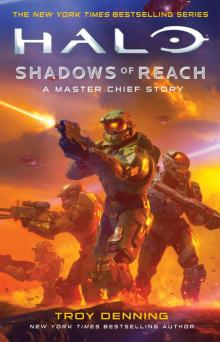 Shadows of Reach: A Master Chief Story
Shadows of Reach: A Master Chief Story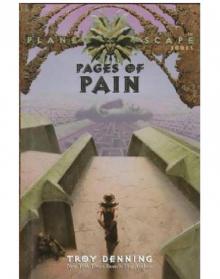 Pages of Pain p-1
Pages of Pain p-1 Star Wars 396 - The Dark Nest Trilogy III - The Swarm War
Star Wars 396 - The Dark Nest Trilogy III - The Swarm War Star Wars: Fate of the Jedi: Apocalypse
Star Wars: Fate of the Jedi: Apocalypse A Forest Apart
A Forest Apart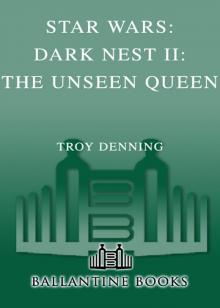 Star Wars: Dark Nest II: The Unseen Queen
Star Wars: Dark Nest II: The Unseen Queen Star Wars: A Forest Apart
Star Wars: A Forest Apart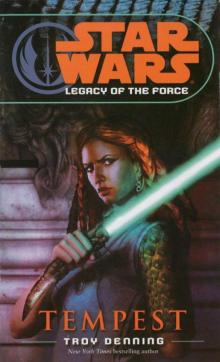 Tempest: Star Wars (Legacy of the Force) (Star Wars: Legacy of the Force)
Tempest: Star Wars (Legacy of the Force) (Star Wars: Legacy of the Force) Star by Star
Star by Star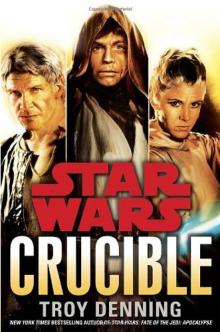 Crucible: Star Wars
Crucible: Star Wars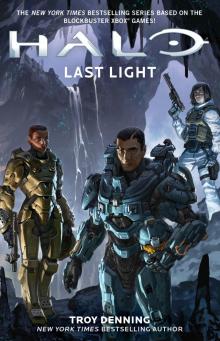 Last Light
Last Light Invincible
Invincible Inferno
Inferno Star Wars - The Trouble With Squibs
Star Wars - The Trouble With Squibs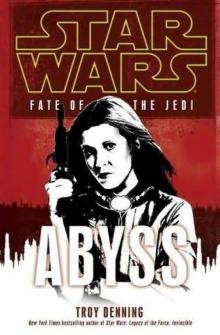 Abyss
Abyss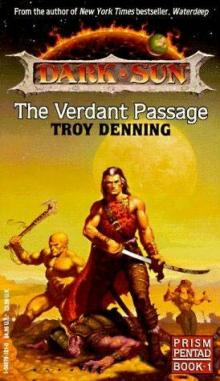 The Verdent Passage
The Verdent Passage Vortex: Star Wars (Fate of the Jedi) (Star Wars: Fate of the Jedi)
Vortex: Star Wars (Fate of the Jedi) (Star Wars: Fate of the Jedi)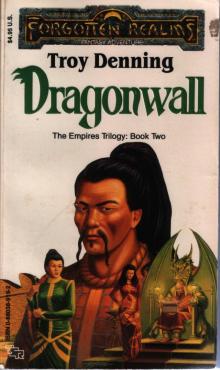 Dragonwall e-2
Dragonwall e-2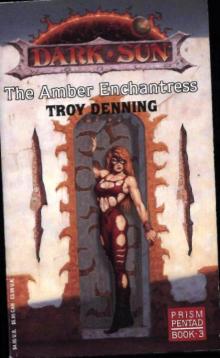 The Amber Enchantress
The Amber Enchantress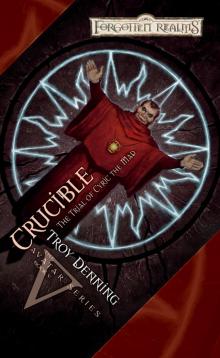 Crucible
Crucible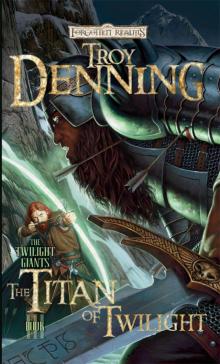 The Titan of Twilight
The Titan of Twilight Dragonwall
Dragonwall Beyond the High Road c-2
Beyond the High Road c-2 The Siege rota-2
The Siege rota-2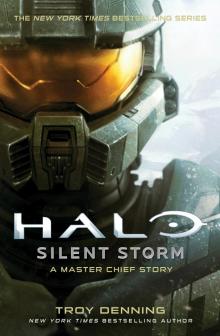 Silent Storm: A Master Chief Story
Silent Storm: A Master Chief Story The Ogre's Pact
The Ogre's Pact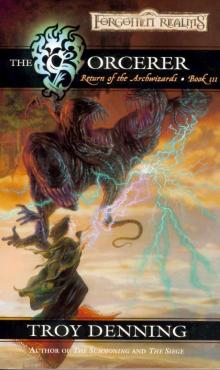 The Sorcerer rota-3
The Sorcerer rota-3 The Parched sea h-1
The Parched sea h-1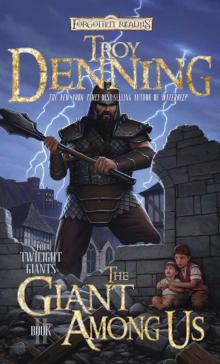 The Giant Among Us
The Giant Among Us Recovery
Recovery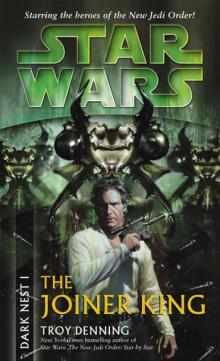 Star Wars: Dark Nest 1: The Joiner King
Star Wars: Dark Nest 1: The Joiner King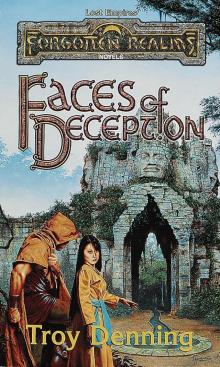 Faces of Deception le-2
Faces of Deception le-2 The Parched Sea
The Parched Sea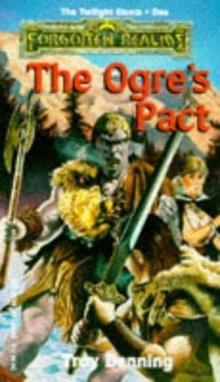 The Ogre's Pact зк-1
The Ogre's Pact зк-1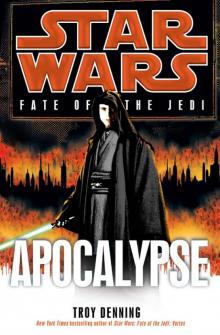 Apocalypse
Apocalypse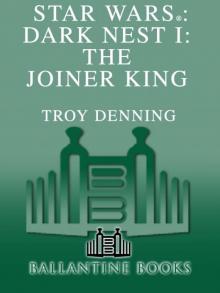 Star Wars®: Dark Nest I: The Joiner King
Star Wars®: Dark Nest I: The Joiner King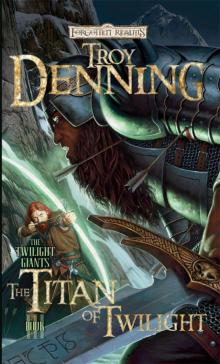 The Titan of Twilight ttg-3
The Titan of Twilight ttg-3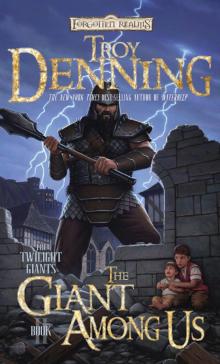 The Giant Among Us ttg-2
The Giant Among Us ttg-2 The Summoning rota-1
The Summoning rota-1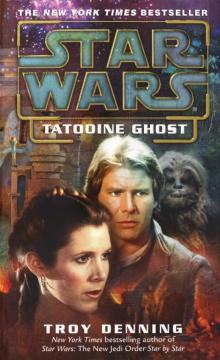 Tatooine Ghost
Tatooine Ghost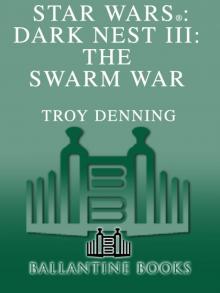 Star Wars®: Dark Nest III: The Swarm War
Star Wars®: Dark Nest III: The Swarm War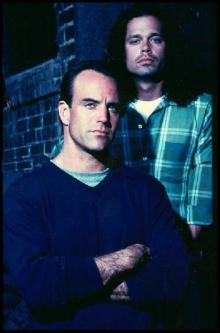 Retribution
Retribution A Forest Apart: Star Wars (Short Story)
A Forest Apart: Star Wars (Short Story) Faces of Deception
Faces of Deception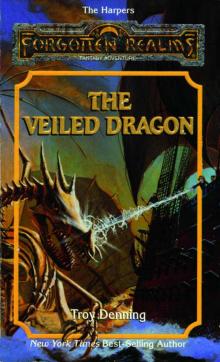 The Veiled Dragon h-12
The Veiled Dragon h-12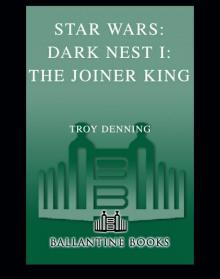 Star Wars 390 - The Dark Nest Trilogy I - The Joiner King
Star Wars 390 - The Dark Nest Trilogy I - The Joiner King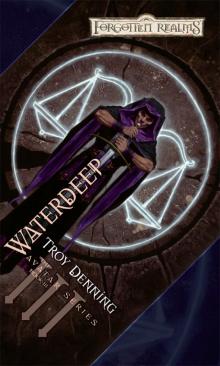 Waterdeep
Waterdeep STAR WARS: NEW JEDI ORDER: RECOVERY
STAR WARS: NEW JEDI ORDER: RECOVERY